Did You Know?
Taobat is where the Kishanganga River enters Pakistan and transforms into the Neelum River
34°43'35.6"N 74°42'44.8"E
Taobat is where the Kishanganga River enters Pakistan and transforms into the Neelum River
The Best Time to Visit Azad Kashmir Region is Summers. Preferably from April to September. Winters are Extremely Cold and Snowfall blocks most of access. Hence Winters are not recommended.

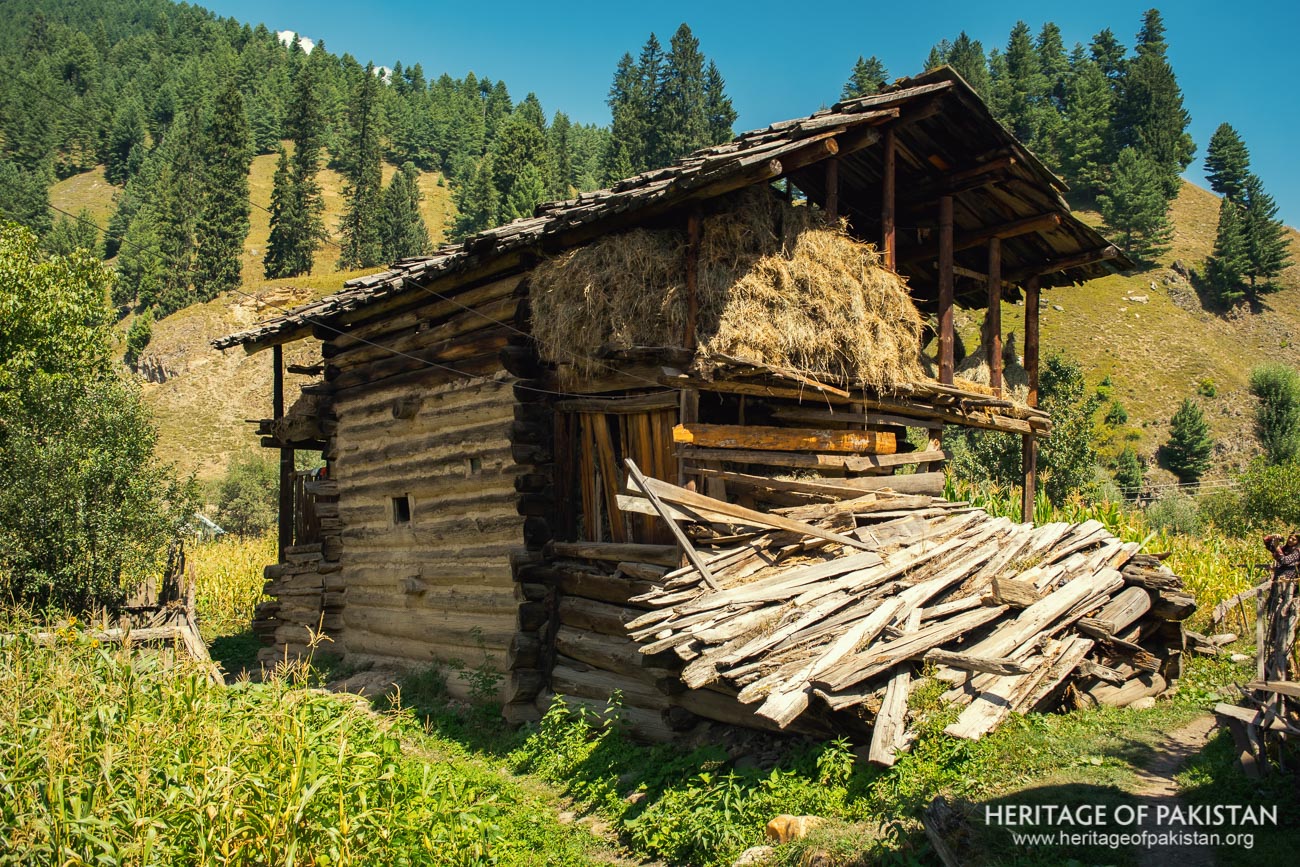
Taobat village, located approximately 40 kilometers from the town of Kel, is the last village in the Neelum Valley, Azad Kashmir, Pakistan. This village is not only geographically significant but also culturally and architecturally rich. It retains the beautiful traditional wooden vernacular Kashmiri architecture, with houses primarily constructed from wood. This local architectural style, rare and unique, makes Taobat one of the few places where such traditions are still preserved. These traditional wooden houses cannot be found anywhere else in Pakistan and due to their uniqueness, it is important they be studied, documented and preserved.
Taobat holds considerable geographical significance as it is the point where the Kishanganga River enters Pakistan, subsequently becoming the Neelum River. Just a few kilometers beyond Taobat lies the Line of Control (LoC), which separates Pakistan from Indian-controlled Kashmir. Across this line is the Gurez Valley in India, making Taobat a strategic location near the contentious border area. Adjoining areas in India also share similar cultural and natural features.
The village of Taobat presents an almost surreal visual appeal, akin to a scene from a medieval fairy tale. The wooden log houses, surrounded by expansive fields of corn, create a picturesque landscape. The combination of traditional architecture, natural beauty, and a traditional lifestyle is unmatched, offering a unique window into the past of this region.
Taobat comprises around 100 houses, with a significant portion of the population engaged in agriculture. The fields surrounding the village are rich with crops such as corn, kidney beans, potatoes, and various other vegetables. This agricultural lifestyle sustains the village, although many men seek employment in urban centers to support their families, reflecting a blend of traditional and modern economic practices. The agricultural practices in Taobat are integral to its identity. The fields are meticulously maintained, and the variety of crops grown demonstrates the villagers' agricultural expertise. This agrarian lifestyle not only supports the local economy but also preserves the cultural heritage of the region.

According to historians, the Neelum Valley region, including Taobat, was settled by Aryans around 3000 BC. Over the centuries, the region saw the flourishing of Buddhism and Hinduism, as evidenced by the construction of a temple at Sharda dedicated to Lord Shiva. This historical backdrop adds layers of cultural and religious significance to the area.
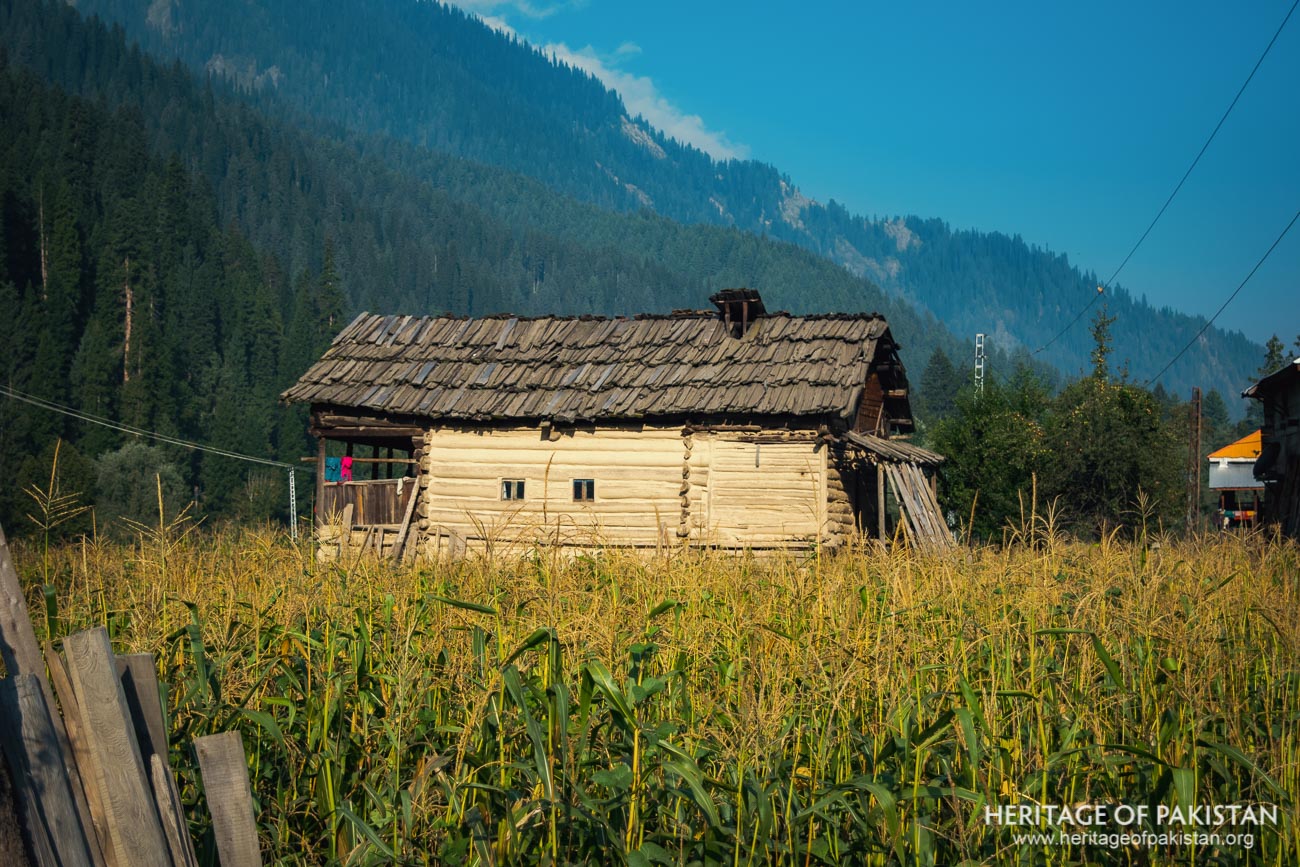
Taobat can be reached starting one's road journey from Muzaffarabad. It is the last village in the Azad Kashmir region and hence one has to cross all important towns and villages on the way such as Keran, Sharda and Kel. However, Sharda onwards a jeep or 4x4 is recommended as the road is not metaled and visitors are cautioned to be careful and to plan ahead. The journey to Taobat from Dawarian is a scenic one, dotted with several small settlements and villages including Machhal, Janoi, Phulwai, Sardari, Hilmat, and Makroon. For visitors, Taobat offers a range of accommodations, with several hotels available for overnight stays.This route provides travelers with a glimpse of the diverse and vibrant communities that populate the Neelum Valley.
Reaching Taobat from Kel is relatively straightforward, taking approximately three hours by jeep or 4x4 vehicle. This accessibility makes it a feasible destination for tourists seeking to experience the unique combination of traditional architecture, natural beauty, and village life in Kashmir
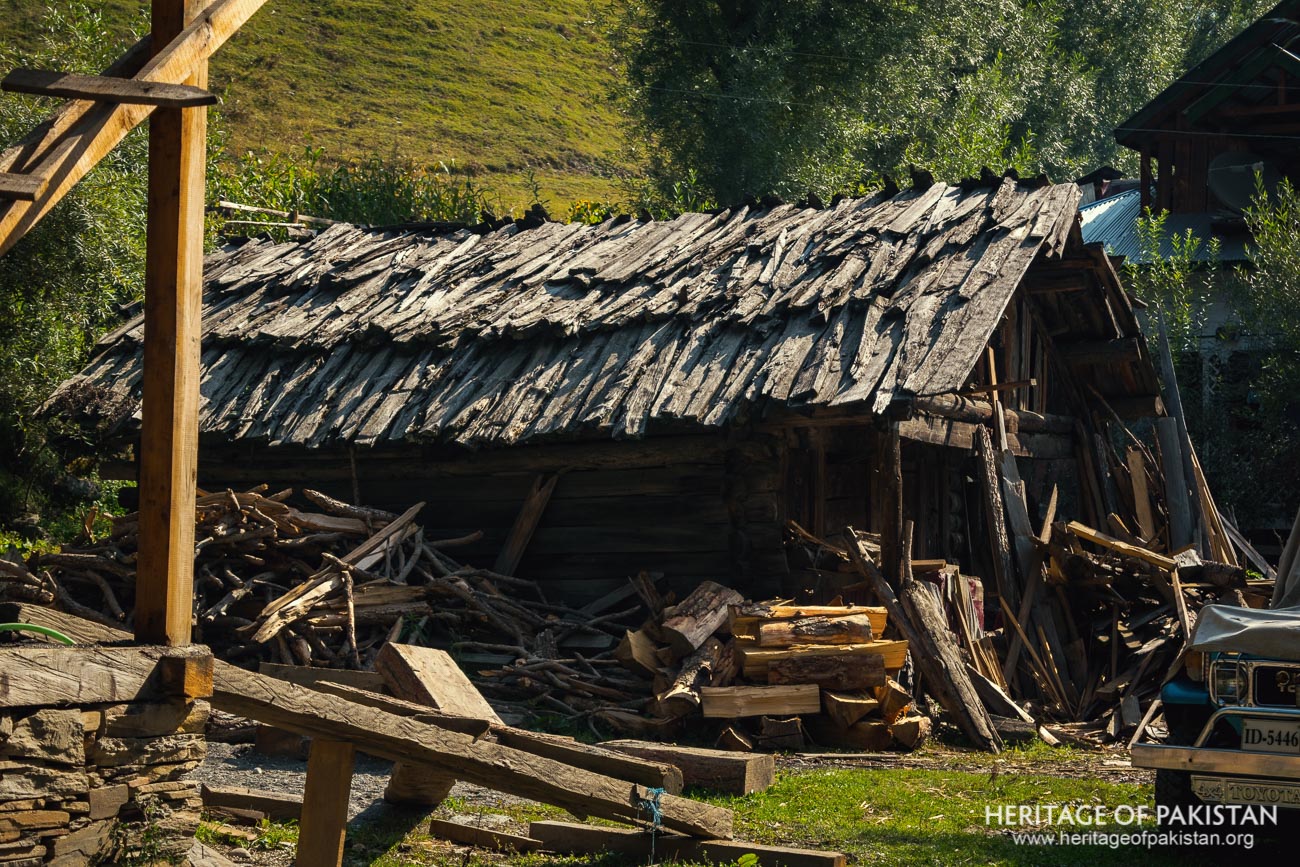
Taobat village's distinctive feature is its traditional wooden architecture, which is constructed by the locals using vernacular knowledge. This architectural heritage, rooted in the use of wood, stone, and mud, offers a unique blend of traditional craftsmanship and climatic responsiveness. The following is an analysis of Taobat village's architectural aspects, focusing on how these structures are constructed to suit the demands of its people while withstanding the region's difficult climatic circumstances.
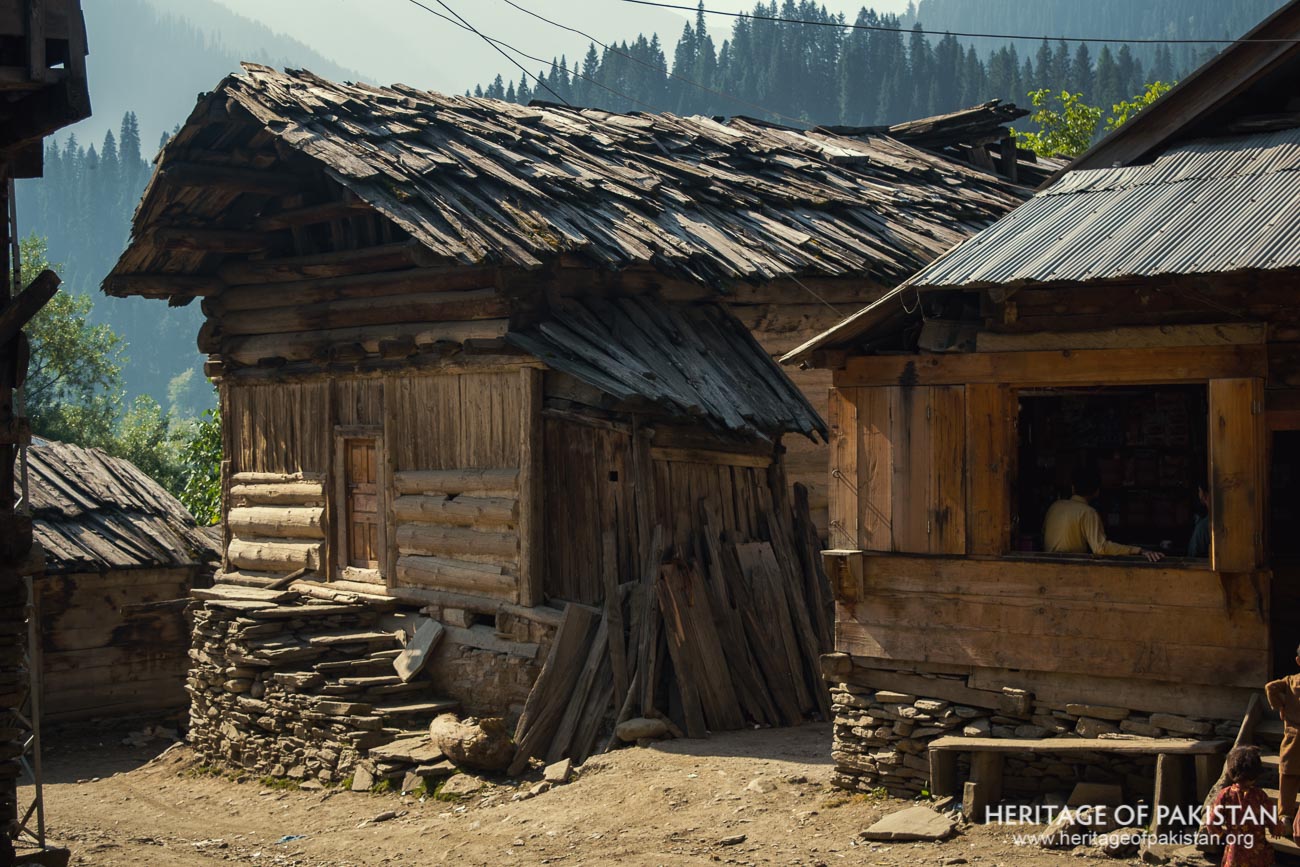
The houses in Taobat are constructed using a combination of wood, stone, and mud. These materials are readily available in the Kashmir region, ensuring that the structures are well-suited to the local environment in terms of sustainability. The houses are usually not small; they are full-scale structures with multiple rooms and stories, reflecting an eleborate approach to spatial organization. While many newer houses feature tin roofs and are painted in bright colors, older traditional houses are characterized by pure wooden log roofs.
The use of local materials and traditional construction techniques not only ensures the durability of the structures but also integrates them harmoniously into the natural landscape. This architectural style has been practiced in the valley and adjacent regions with similar climates for centuries, demonstrating its effectiveness and resilience.
The architecture of Taobat village is notably climate-responsive, particularly in its adaptation to extreme cold. Traditional wooden log houses are exemplary in their ability to withstand severe winters. The design and style of these buildings have been derived from ancient traditions, making optimal use of locally available building materials. This climate-responsive architecture is not only prevalent in Taobat but also in neighboring valleys, showcasing a regional architectural style which has evolved in response to the geography and climate.
A typical house in Taobat consists of a ground floor, a first floor, and an attic space within the roof. The attic is primarily used for storage, while stairs connect the ground floor to the first floor. Often, there are two staircases: one inside the house and one outside, providing additional access between floors.
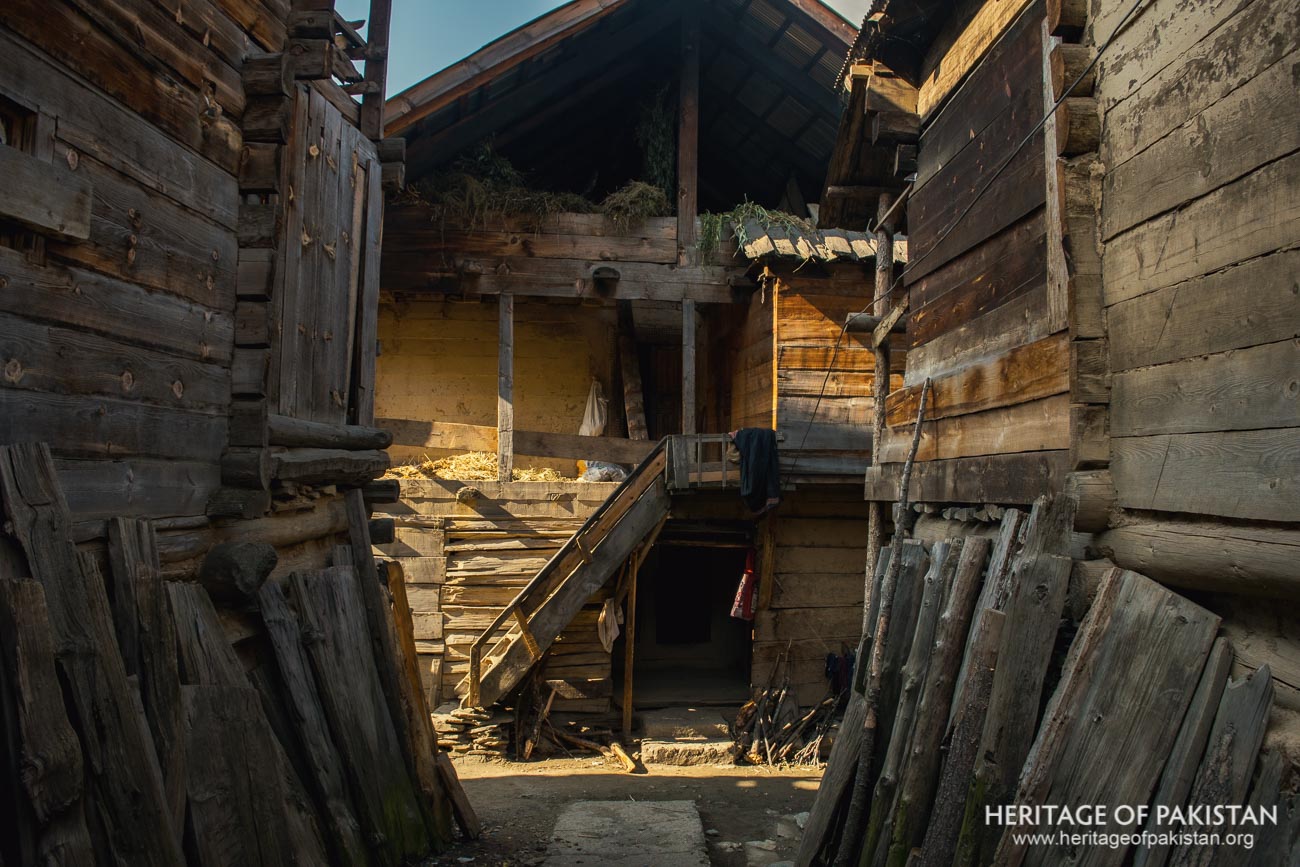
The interior layout of these houses is carefully planned to accommodate family living. The first floor typically houses family spaces such as the living room, kitchen, bedrooms, and bathroom. Additionally, there is designated space for storing animal fodder, reflecting the integration of agricultural practices into daily life, as animals form an integral part of the agrarian life all over Pakistan. Despite minor variations in interior division, the spatial organization remains consistent across traditional wooden log houses in Taobat.
Due to heavy snow accumulation during winter, the entryway of the house is elevated, usually at least six feet from ground level. This design feature prevents snow from blocking access to the house. Ground floors are constructed with standing stone walls or stone masonry combined with wood framing, protecting the buildings from water and snow damage.
In winter, animals are kept inside the houses at ground level. This arrangement not only shields the animals from the cold but also transfers their body heat to the upper levels, providing additional warmth. Animal fodder is stored on the ground floor alongside the animals, ensuring easy access during winter months.
The exterior walls of these houses are thick, enhancing their insulating properties. Interior walls are slightly thinner, balancing insulation with spatial efficiency. A unique feature of these houses is the combination of small and large windows. Small windows help retain heat while ensuring adequate ventilation, and the wooden roofs provide excellent insulation against the snow.
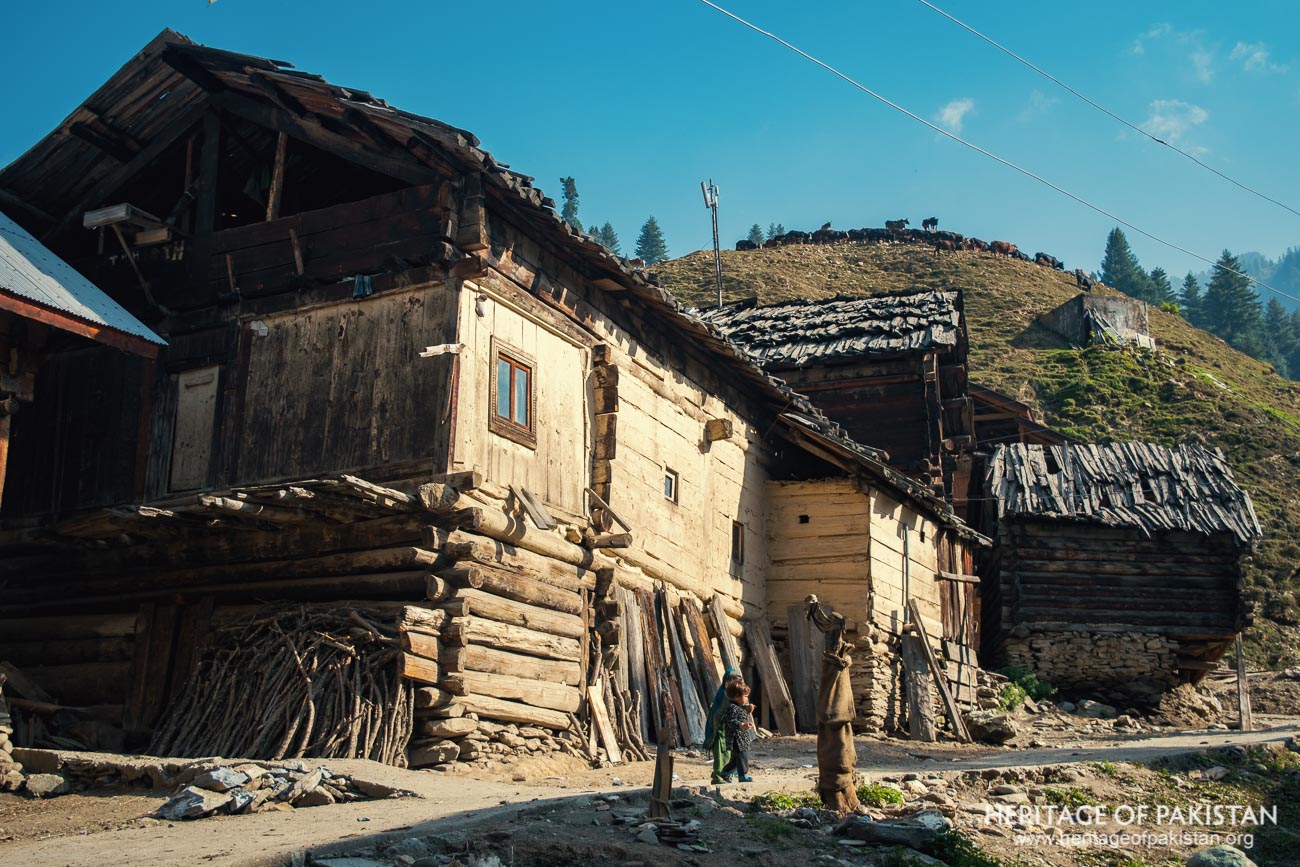
Resource management is a critical aspect of life in Taobat as in any community in harsh climates. Wood is a vital resource, collected in the summer and stacked outside the houses for use as fuel throughout the year. This practice ensures a steady supply of firewood for heating during the long winters. It is common to see stacks of wood outside all the houses in Taobat.
During winter, a single room is kept warm for the entire family. This room, often serving as the kitchen, family sitting area, and sleeping space, is where the wood stored during the summer is utilized. Additionally, there is typically a family terrace and a separate room for married couples. Access to the attic is essential for storing and drying grass for animals in the summer and for storing wood in the winter.
The architecture of Taobat village is a remarkable example of vernacular design that is both functional and sustainable. The use of wood, stone, and mud, combined with climate-responsive design, ensures that these houses can withstand the harsh winters of the Neelum Valley. The spatial organization of the houses reflects the practical needs of the residents, with provisions for living spaces, animal storage, and resource management.
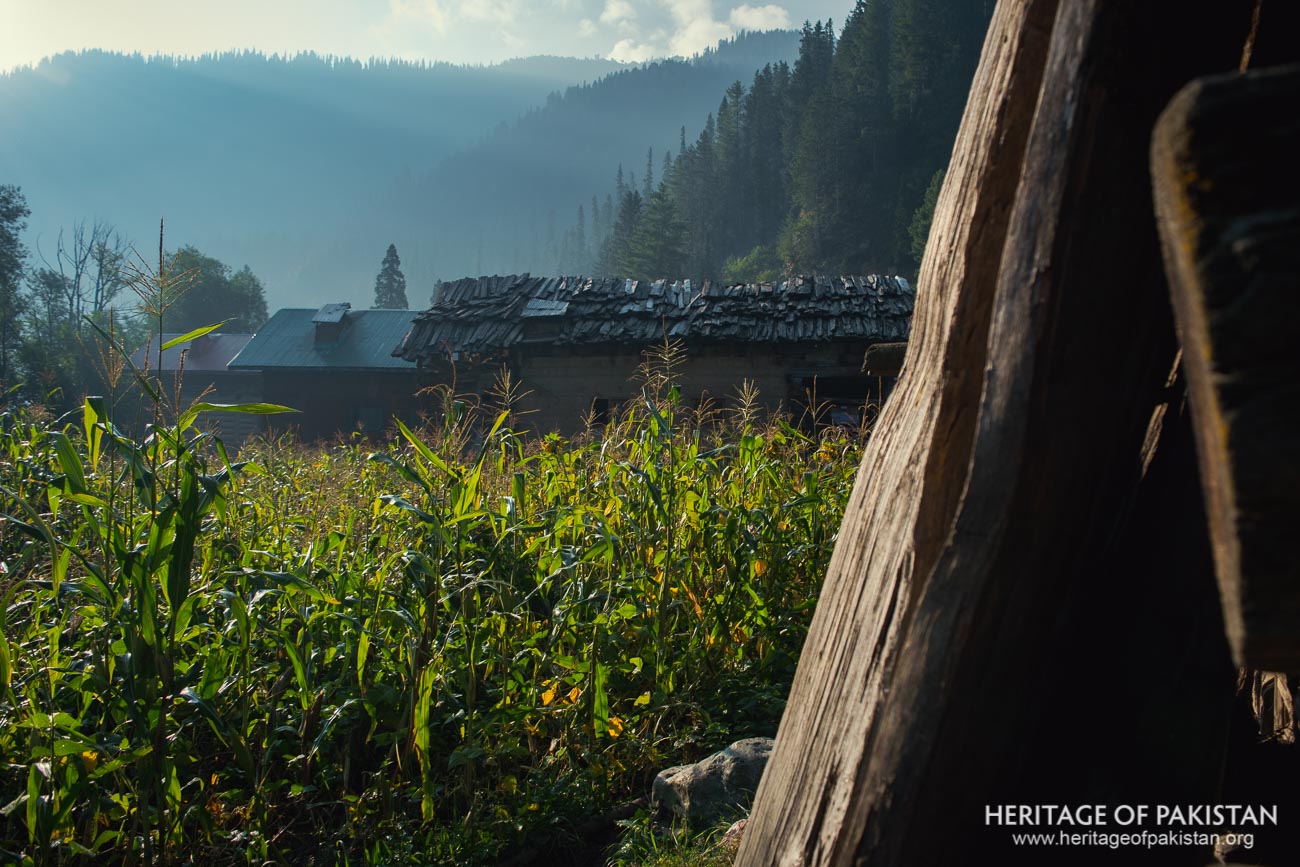
This architectural heritage not only preserves the cultural identity of the region but also offers valuable insights into sustainable building practices. The traditional wooden log houses of Taobat are an example of the ingenuity and adaptability of the people, providing a harmonious blend of functionality, aesthetics, and environmental responsiveness. By maintaining these traditional practices, the residents of Taobat continue to uphold a unique architectural legacy that is deeply intertwined with their way of life.
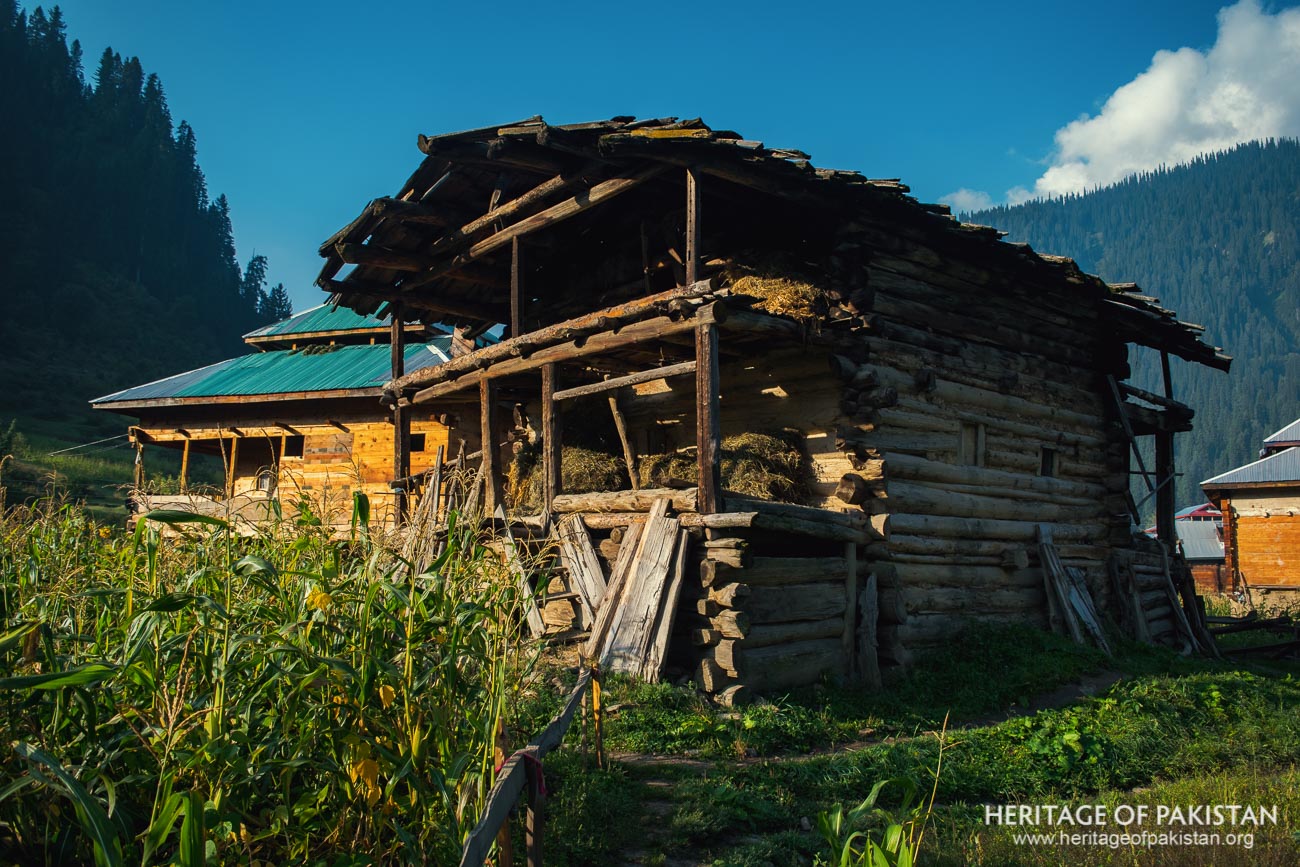

All Photographs by Syed Noor Hussain and Sania Azhar.
All Rights Reserved. Photos may be used for Non-Commercial, Educational, Artistic, Research, Non-Profit & Academic purposes.
Commercial uses require licensing agreement.


Add a review